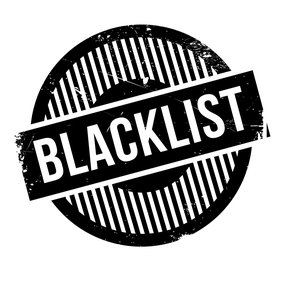The New Administration Strikes a Death Blow to the Fair Pay and Safe Workplace Rule

SUMMARY: On March 27, 2017, President Trump signed a Congressional resolution that permanently eliminates the Obama Administration’s Fair Pay and Safe Workplaces regulations (also known as the “blacklisting rule”) and prevents the agencies from issuing any similar rule in the future.
As we previously reported, in August of 2016, the Obama Administration (through the Federal Acquisition Regulatory Council and the Department of Labor) issued final regulations to implement President Obama’s Executive Order on Fair Pay and Safe Workplaces.
In particular, the regulations would have required federal contractors and sub-contractors of all tiers bidding on contracts over $500,000 to submit a comprehensive disclosure of any violations of 14 different federal labor laws and their state equivalents going back three years from the date of the bid. The regulations also included provisions to require covered contractors to provide their employees with detailed wage statements and to prevent contractors with federal contracts totaling $1 million or more from requiring employees to submit to binding arbitration for sexual harassment or Title VII claims.
The violation reporting and arbitration portions of the rule were scheduled to go into effect on October 25, 2016, with the wage statement requirement going into effect on January 1, 2017. However, just one day before the effective date, on October 24, 2016, a federal District Court issued a nationwide preliminary injunction staying implementation of the reporting and arbitration portions of the rule.
Amidst the uncertainty surrounding the rule’s future following the District Court’s decisions, Congress took advantage of a little-utilized statute to eliminate any questions and strike the rule in its entirety.
Specifically, the Republican controlled House and Senate were able to work together to block the rule using the Congressional Review Act (the “CRA”). The CRA is a more than twenty year old law that, before this year, has only been successfully used once before.
Under the CRA, Congress has sixty legislative days (i.e. days that it is in session) after a final regulation is issued to take steps to pass a resolution disapproving of the regulation. A CRA resolution cannot be filibustered in the Senate and therefore can pass both the House and Senate by a simple majority. Once such resolution passes both chambers of Congress, the President can then approve or veto the resolution. Historically, CRA resolutions are not that common because a President will inevitably veto any resolution to strike down a regulation promulgated by his administration. While it only takes 60 votes in the Senate to break a filibuster on a standard piece of legislation, it takes 67 votes to override a presidential veto. Thus, if there is enough support in Congress to override a presidential veto, Congress can simply pass legislation to alter the regulation and doesn’t need to resort to a CRA resolution. However, when an administration is coming to an end, the sixty day review period can carry over to the next Congress, with any CRA resolution being considered by the next President. As we are currently seeing, this means that, if control of the White House changes parties and that same party has a majority in both chambers of Congress, the new Congress and administration can effectively undo any of the prior administration’s regulations that were finalized less than sixty legislative days before the end of the term (for 2016 this cutoff fell in early June).
In addition to striking the current rule, a CRA resolution prevents the issuing agency from issuing any new rule that is substantially similar to the rule that was subject to the resolution unless the agency is specifically authorized to do so by Congress through a law enacted after the date of the CRA resolution.
The Fair Pay and Safe Workplaces rule is not the only Obama-era regulation that has found its way to the chopping block under the new administration. As of the end March 2017, six other Obama Administration regulations have been eliminated through CRA resolutions signed by President Trump. Another six regulations will be eliminated under resolutions that have been passed by both the House and Senate and are awaiting Presidential approval (which they are expected to get). Of note for employers, these include a resolution (passed out of the Senate on March 22) to eliminate the new rule that the Occupational Safety and Health Administration (OSHA) put out in December of 2016 that would have expanded the period during which OSHA could issue citations for recordkeeping violations from six months to five years.
